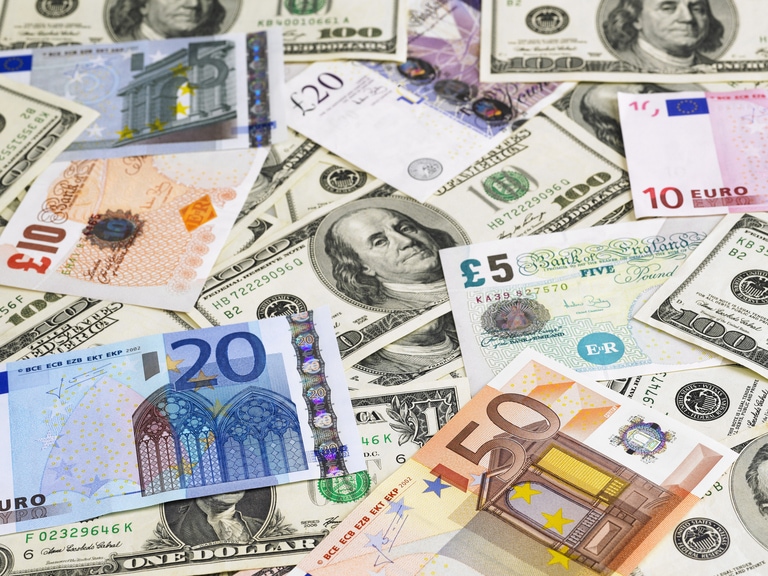Markets got a huge kick in their complacency on Friday in the wake of last week’s central bank rate meetings, which saw another round of rate hikes from the Federal Reserve, Bank of England and the European Central Bank.
A lot of assumptions were being made in the aftermath of those meetings, with market price action telling a different story to the messaging that we heard from all three central banks. All three central banks issued reasonably hawkish messaging, saying they had further to go in raising rates, which markets dismissed on the premise that even if they did hike again, there would only be one more, and rates would probably be coming down again by year end.
This belief was predicated on Fed chairman Jay Powell acknowledging signs of disinflationary trends and that the slowing in the pace of rising prices was encouraging. This appeared to be construed as a dovish tilt by Powell, when it was merely a statement of the obvious.
In any case Friday’s US non-farm payrolls report for January blew a large hole in the argument that rates were likely to come down quickly, after 517,000 jobs were added, and the unemployment rate fell to its lowest level since 1969, at 3.4%. It was also notable that the US services sector rebounded strongly in January, with a strong performance as well in the ISM survey. Friday’s data also raised the prospect that rather than just one more rate hike in March we could see another rate hike in May.
The sharp stock market sell-off on Friday wasn’t enough to stop US and European markets from posting another positive week, and to see the FTSE 100 post a new record high due to a slide in the value of the pound, but it was a warning shot to markets that fears over a US recession are currently overblown. The reaction of bond markets to Friday’s payrolls report was equally as sharp, with the US 2-year yield hitting a one-month high only 24 hours after posting a three-month low. The US dollar index also rebounded strongly, only hours after touching a nine-month low, it finished the week at a three-week high.
There is little doubt that the pace of price increases is slowing, but what we’ve seen over the last two weeks with US markets surging strongly, has been driven partially by a lot of wishful thinking that the soaring inflation rate over the last 12-18 months will dissipate just as quickly on the other side. That seems unlikely and while we could see headline inflation fall back to 5% quite quickly, core prices might prove to be much stickier. The US CPI reading for January, which is due next week, now becomes the next hurdle for US equity markets, and core prices especially, with a strong reading here potentially acting as a barrier for further upside in US equity markets.
As we look ahead to a new trading week, what was especially notable from last week’s bumper payrolls report, was how the FTSE 100 managed to benefit, pushing up to a new record high, on a combination of a weaker pound, an improved economic outlook, and much lower valuations. The surprising strength of Friday’s payrolls report has certainly provided food for thought, and in so doing has outlined the risk that rates could well remain high for quite some time, especially if inflation continues to stay high.
One thing Friday’s strong jobs number didn’t change was the fact that stock markets are still in their wider uptrend from the October lows, and they would have to fall a lot further for that to change. We also saw the FTSE 100 outperform on Friday, posting a new record high, raising the possibility that we might see further gains in the weeks and months ahead towards the 8,000 level, despite the uncertain economic outlook.
Rates markets have continued to see yields push higher, and that looks set to translate into a weaker European open, even as the Japanese yen slips back sharply in Asia on reports that Governor Kuroda’s Bank of Japan successor might be his deputy, Masayoshi Amamiya, raising the prospect of continuity when it comes to easy monetary policy.
The sharp slide in the value of the pound is also likely to be a worry for the Bank of England, with inflation still well into double figures. External MPC member Catherine Mann is due to speak later today, as is chief economist Huw Pill, and their comments could offer food for thought as to where they see the terminal rate for UK rates, with the current base rate at 4%.
EUR/USD – the inability to hold above the 1.1000 area last week has seen the euro slip back sharply, dropping below the 1.0820 area and opening up the potential for further losses towards 1.0720, and the 50-day SMA.
GBP/USD – looks set for further sharp losses after falling below the 1.2170 area, and 50-day SMA. Having also fallen below the 1.2080 area, which now becomes resistance, we could see further losses towards 1.1835.
EUR/GBP – continues to edge towards the 0.9000 area, with support now at the 0.8870 area. Above 0.9000 targets 0.9070.
USD/JPY – Friday’s sharp reversal off the 128.00 area has seen the US dollar surge back through the 130.20 area as well as the 131.60 area, and could see further gains towards 134.80 on a break above the 50-day SMA at 132.70.






